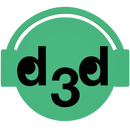Kingroon KLP1 is a 3D printer based on Klipper firmware and comes with an enclosure. It uses linear rails on the X and Y axis, and linear rods with bar bearings on the Z-axis. The print volume is 210mm in the X, Y, and Z directions.
Features: This printer boasts a fast printing speed of 350mm per second, which is quite impressive! The acceleration is listed as 10,000mm per square second, although I've seen some conflicting information stating it's 520,000.
Now, here's where it gets interesting – the price. At only $379! And guess what? It even comes with a touchscreen.
KLP1 Specifications
The KLP1 printer features a 5:1 gear ratio extruder and includes a built-in accelerometer for input shaping. The maximum printing temperature of 260 degree with an all-metal heat break.
| Product Model | Kingroon KLP1 |
|---|---|
| Technology | FDM |
| Machine Size | 210*210*210mm |
| Packaging Size | 400*420*420mm |
| Net Weight | 420*490*470mm |
| Firmware | 14kg |
| Print Via | Klipper |
| Machine Power | Web/UsB Flash Disk |
| Input Voltage | 240W |
| Input Voltage | 110V-220V |
| Power supply | 24V 12.5A 300W |
| Feeder System | Direct Extruder |
| Printing Accuracy | 0.05-0.3mm |
| Nozzle Max Temperature | ≤260℃ |
| Heated Bed Max Temperature | ≤100℃ |
| Max Movement Speed | ≤500mm/S |
| Acceleration | ≤20000mm/S² |
| Recommended Printing Speed | 200mm-350mm/s |
| File Format | STL/Obj/Gcode |
| Machine Leveling | Support |
| Material Break Detection |
Yes |
| Power Loss Recovery | Yes |
| System Requirement | Win7-10/Mac/Linux |
| Slicing Software | Cura/Slice/Host... |
| Nozzle Diameter | 0.4mm |
| Print Bed | Heat Bed With PEl Sheet |
| Languages | English,Spanish, German, French, Russian, Portuguese, ltalian, Nederlands, Turkish,japanese. Korean, Chinese |
📦 Unboxing
Everything arrived nicely packed and protected during shipping in white foam.The printer was almost fully assembled in the box. The contents included some PLA samples. There was also a pen, possibly for the touchscreen, which was a nice touch to avoid fingerprints. Additionally, power cables, tools, bolts, a user manual, and a USB disk were included. The package also contained plexiglass panels that would go around the printer, making it completely enclosed. This feature is useful for printing ABS, but caution is advised as it may cause issues with PLA printing. A spare nozzle was provided, a similar one was already installed in the extruder.
We can see a quick guide card in the box. The first step is to remove the securing bolts on the y, x, and z-aixes. The bolts are easily found by following the arrows. The z-axis has a separate motor and a lead screw for lifting. The printer has stiff rods and big linear ball bearings. There is lubricant on the lead screw, and it would be good to have a backlash nut for more precision. The top of the printer has a plexiglass cover, which is pressed down tightly. There is a heavy-duty cable, but it might be better to have some kind of drag chain for protection.
The maximum printing temperature is 300 degrees Celsius. The maximum speed is 500 millimeters per second, but the recommended speed is 350.
The plexiglass is installed by removing the protection film and carefully tightening the bolts without overdoing it to avoid breakage. The printer's top cover has a magnet strap for a good fit. The touchscreen, which can still be used with Klipper on a smartphone or computer, is inside the enclosure. The z-axis is left higher over the screen by removing the protection film.
The back of the printer has the power switch, filament run-out sensor, and the spool holder. The left side of the printer has network and USB connections.
Before turning on the KLP1 3D printer, check the voltage to ensure it is set correctly for the country. Turn on the printer and lift it higher to remove the protection film. The LED lights up, and after approximately 40 seconds, the setup is complete.
KLP1 Menus Language
Some people's Kingroon KLP1 arrived with the Chinese language selected in Klipper. For people who have no idea to Chinese, the first thing is to find the language selection and switch the Menus to English.

Network Setup of KLP1
I turned on the computer and it started booting up. To have a faster connection, I decided to use a cable instead of Wi-Fi, especially when transferring larger files.
Some people may received the Kingroon KLP1 with Chinese as default language. In this case, you could follow the video to change the language settings before checking the Wi-Fi connection. The language settings option represented by a small gear icon.
I had a USB disk with a file containing my Wi-Fi username and password. So, I connected the USB disk and entered the necessary information. The Wi-Fi connection data was on the USB drive.
Now that the language was set, I proceeded to check the network configuration. I accessed the Network menu and found the IP address that I needed to enter into the browser to connect with the printer. After entering the IP address into the browser, I was able to see the printer's interface. However, there was still a language issue, so I had to change the language to English again. I located the language settings and made the switch at 8:09. And that's how I completed the turn-on and network setup process for the printer.



